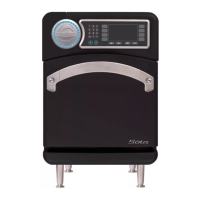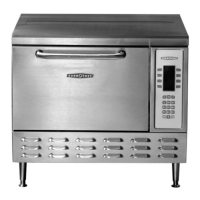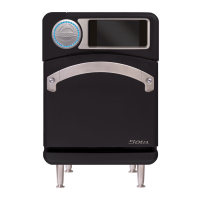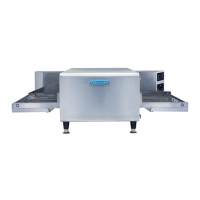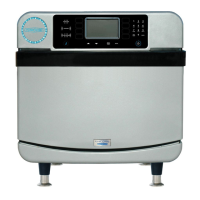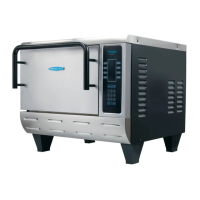OVEN SYSTEMS
25
T
esting a High-Voltage Diode
DANGER
:
Never attempt to measure high
voltage directly. Death or serious injury
could result.
1. D
isconnect the o
ven from the power source.
2. Fully discharge the capacitors.
3.
Connect the voltage meter in series with high-
v
oltage diode.
4.
U
sing a multimeter set to DC voltage, connect
one meter lead to one side of a 9-v
olt batter
y
and the other lead to one side of the high-voltage
diode.
5. Connect the other side of the 9-volt battery to
the other side of the high-voltage diode. DC
v
oltage should be present on the meter in only
one dir
ection.
6.
S
witch the meter leads on the high-voltage diode,
which will cause the opposite reading to be
visible. Depending on the voltage of the battery,
v
oltage between 5-7 VDC should be present in
only one dir
ection and 0-0.1 VDC in the other
dir
ection.
High Voltage Transformers Primary Voltage, Frequency, Taps,
and R
esistance
Secondary Taps and Resistance
NGC-3062-1 208
V
AC, 60 Hz, 1 & 2,
0.819–1.001
W
240 VAC, 60 Hz, 1 & 3,
0.972–1.188
W
4, G
r
ound, 53.60–65.52
W
NGC-3062-2 230 VAC, 50 Hz, 1 & 2,
0.972–1.188
W
3, Ground, 57.52–70.30
W
F
ilament Transformers
P
rimary Voltage, Frequency, Taps,
and R
esistance
S
econdary Taps and Resistance
NGC-3061-1 208 VAC, 60 Hz, 1 & 2,
17.49–21.37
W
240
VAC, 60 Hz, 1 & 3,
20.61–25.19
W
4, 5, very low resistance - if read-
ing is open, transformer has failed.
NGC-3061-2 230
VAC, 50 Hz, 1 & 2,
18.99–23.21
W
3, 4, v
ery low resistance - if read-
ing is open, transformer has failed.
F
igure 32: High Voltage and Filament Transformer Resistance Table

